 On the eve of the 2025 "Two Sessions", Dai Bin, member of the 14th National Committee of the Chinese People's Political Consultative Conference and president of our institute, accepted an exclusive interview with "Zongheng" magazine, which is managed by the General Office of the National Committee of the Chinese People's Political Consultative Conference and sponsored by China Literature and History Publishing House. He analyzed hot events in the field of culture and tourism and talked about the 40 years of development of China's tourism. The full text was published in the opening chapter of the first issue of "Zongheng" in 2025, "Striving for a New Era·Experiencers' Speech", which is shared as follows:
On the eve of the 2025 "Two Sessions", Dai Bin, member of the 14th National Committee of the Chinese People's Political Consultative Conference and president of our institute, accepted an exclusive interview with "Zongheng" magazine, which is managed by the General Office of the National Committee of the Chinese People's Political Consultative Conference and sponsored by China Literature and History Publishing House. He analyzed hot events in the field of culture and tourism and talked about the 40 years of development of China's tourism. The full text was published in the opening chapter of the first issue of "Zongheng" in 2025, "Striving for a New Era·Experiencers' Speech", which is shared as follows:
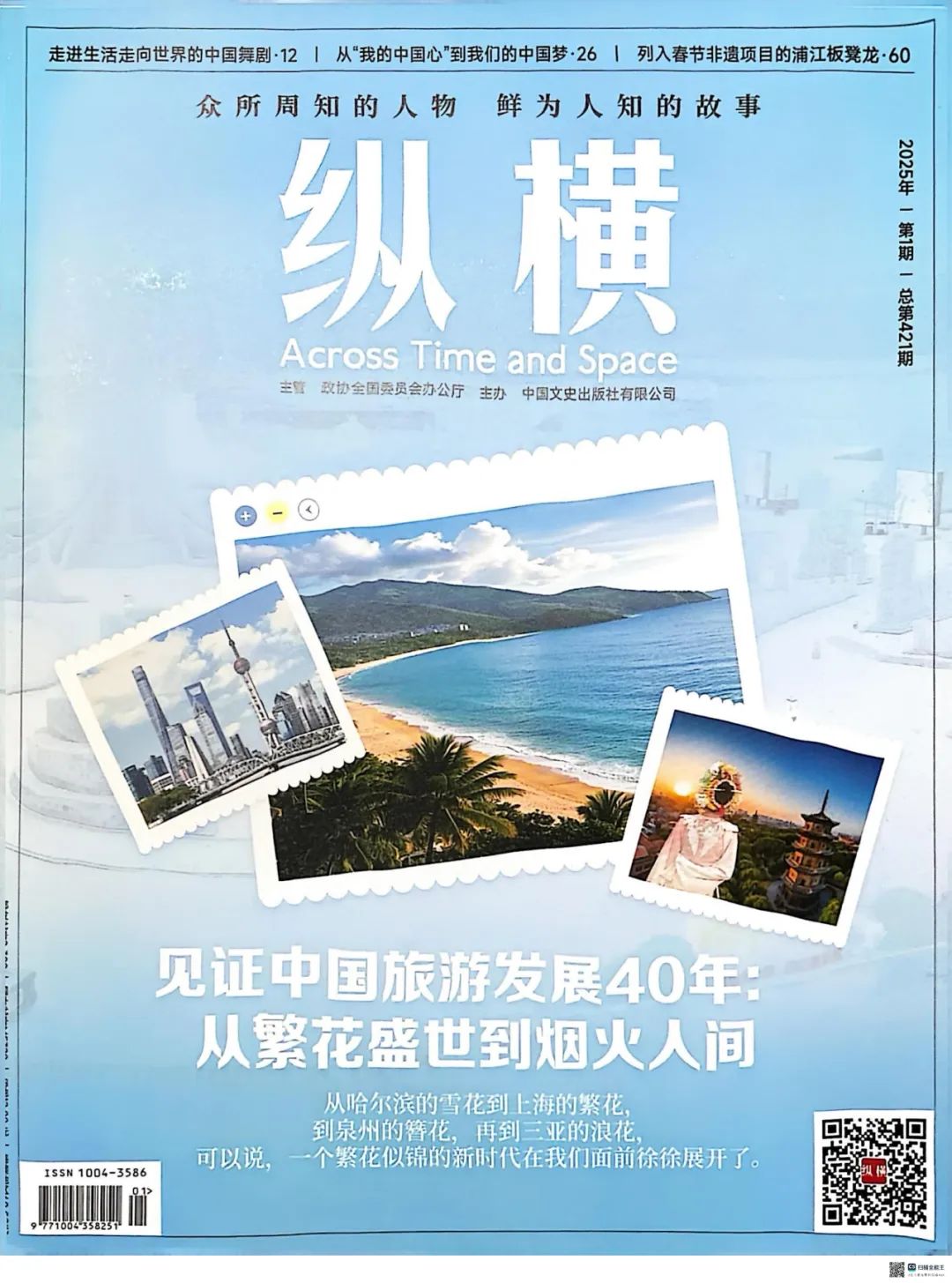
 The following content was narrated by Dai Bin, member of the 14th National Committee of the Chinese People's Political Consultative Conference, president of the China Tourism Academy, and director of the Data Center of the Ministry of Culture and Tourism
The following content was narrated by Dai Bin, member of the 14th National Committee of the Chinese People's Political Consultative Conference, president of the China Tourism Academy, and director of the Data Center of the Ministry of Culture and Tourism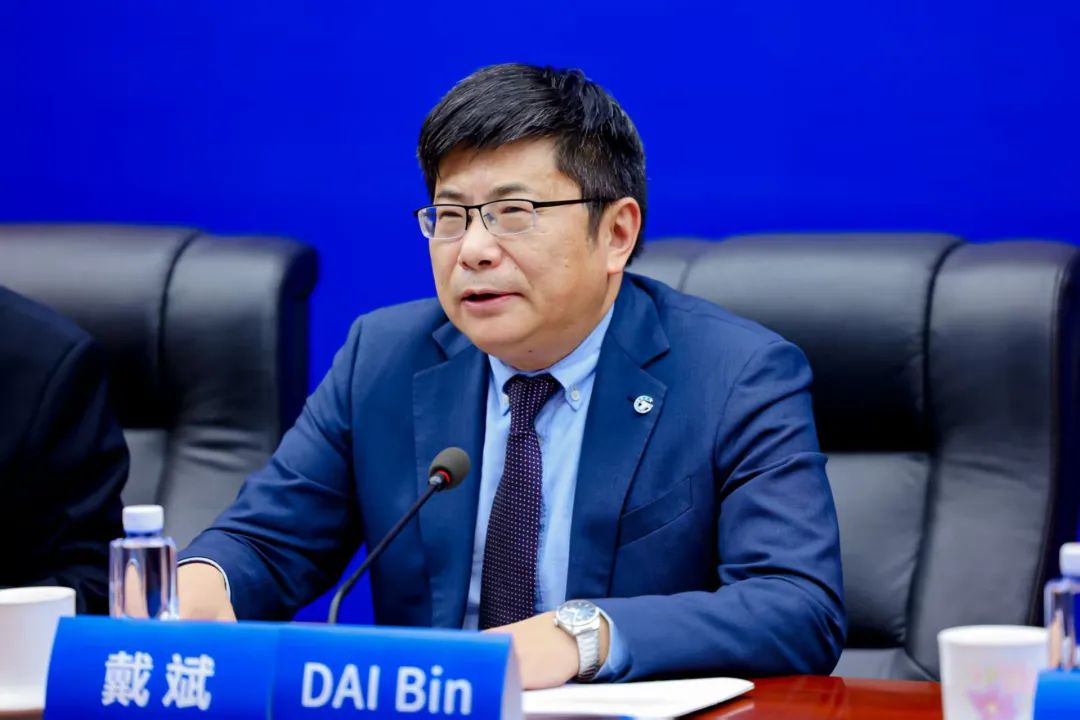
01Traces of Time: The Trilogy of Chinese Tourism
The concept of "cultural tourism" originated from the establishment of the Ministry of Culture and Tourism in 2018. Before that, the people were more familiar with "tourism". Tourism activities in my country have existed since ancient times, but from a national perspective, the development of tourism as an industry has benefited from reform and opening up. I think it can be roughly divided into three stages: the golden development stage of inbound tourism in the 1980s, the initial stage of the rise of national tourism (or mass tourism) in the late 1990s, and the new stage of cultural tourism integration after 2018. I have the honor of witnessing the development process of my country's tourism industry from scratch and from small to large.
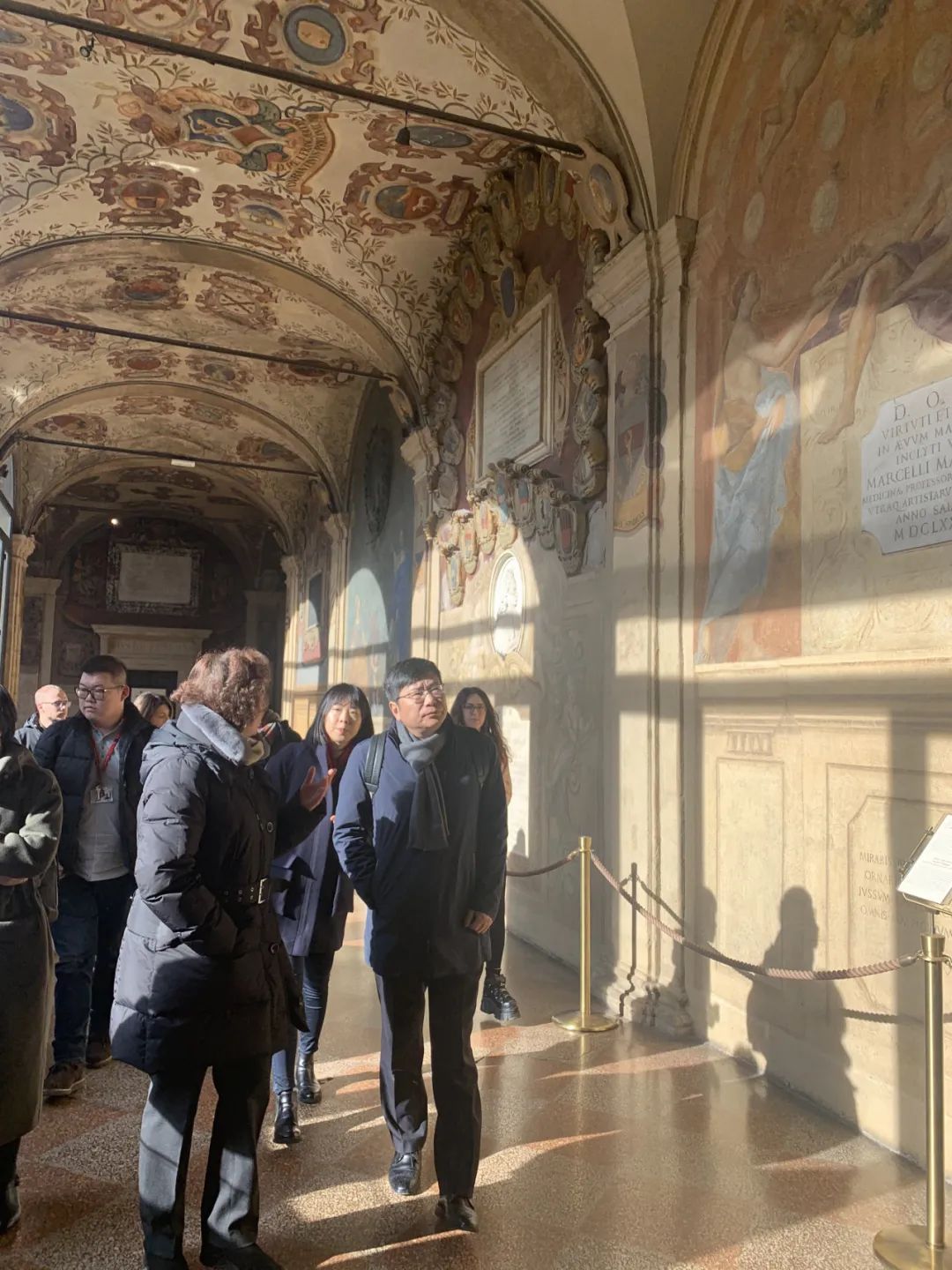
In 2019, he visited the University of Bologna, Italy
In 1979, Comrade Deng Xiaoping visited Huangshan and gave important instructions on the development of Huangshan tourism, which opened the curtain for the development of my country's contemporary tourism industry. The 1980s was a period of inbound tourism. Objectively speaking, the tourism industry at that time had little to do with the people. It was mainly foreigners who traveled in China, and the Chinese were responsible for receiving them. Why did so many Japanese, Koreans, and blond-haired and blue-eyed Europeans come to China? I remember my first impression of the tourism scene when I was studying in Ma'anshan, Anhui in the fall of 1986. I saw many Japanese people reading poems around the local tomb of Li Bai, just like everyone goes to Xi'an to recite "Song of the Wine" now. This picture enlightened me: it turns out that "reading thousands of books and traveling thousands of miles" is like this.
In the next 20 years, my country's tourism industry developed rapidly, but it was still in the era of inbound tourism. In the late 1990s, it began to enter the stage of mass tourism development. The situation began to change, from foreigners traveling and Chinese receiving them to Chinese traveling and Chinese receiving them. In particular, in 1999, my country had its first "Golden Week", and the country received a total of 28 million tourists in 7 days, which was a very remarkable number. By the 2024 Spring Festival holiday, this number has reached 474 million.
As domestic tourism started, outbound tourism also developed. At that time, when people mentioned "outbound travel", they all knew about Singapore, Malaysia, and Thailand, and together with Hong Kong and Macao, they were the representatives of outbound travel. "Did you go out to travel? Did you go to Singapore, Malaysia, and Thailand?" Such conversations were very common at that time. Some friends who traveled to more distant places would call me in the middle of the night. I asked, "What are you doing in the middle of the night?" "Sorry, I forgot about the time difference. I say hello to you from Paris." I joked, "Don't you just want to tell me that you went to Paris? You went abroad, right?" At that time, some people even boasted about this.
Since 2012, the tourism industry has entered a stage of rapid development. Especially since 2018, cultural tourism has been further integrated and developed. Tourism has really entered the daily lives of ordinary people and has become a rigid demand for our better life.
Regarding this stage, several data always come to my mind.
The first data is the number of tourists. In the past 20 years, every five years, the annual number of trips of Chinese citizens increased by 1.4 billion, reaching a historical peak of 6 billion in 2019, plus 155 million outbound trips, a total of about 6.2 billion trips. This is a very amazing number. But think about it, this is equivalent to our average person traveling once a quarter, that is, 4 times a year, while developed countries travel 10-12 times a year, that is, almost once a month. This is a very obvious gap.
The second data is the travel time, that is, how long do you go out to play, how much time do you spend traveling in a year. For example, South Korea has nearly 15 days a year for tourism, while we only have less than 8 days. This means that we often go out, but maybe we come back on the same day. This is also considered a tourist, but the travel time is not that long.
The third data is the travel distance. At present, the average travel distance per person is only 200 kilometers during holidays, and the daily data is even lower. This shows that although there are many tourists, they do not travel too far.
In the past 20 years, especially in the past 10 years, mass tourism has entered a stage of full popularization. Now few people show off their travels, unless they go to very special places, such as Antarctica to see penguins, they may post it on WeChat Moments. Everyone is accustomed to traveling and no longer thinks it is a big deal. Moreover, now traveling has become more daily. In the past, people had to bring their ID cards, household registration books, cash, spare clothes and other things when traveling, but now many people just take their mobile phones and go.
The tourism market players and investment institutions have also changed. In the past, it was tourism companies, travel agencies, and tour guides who took tourists on trips, but now we can travel freely with our mobile phones. Some people will check Mafengwo, Xiaohongshu, etc. to make travel plans before traveling, but young people don't even make travel plans when they go out. They can sleep as late as they want and play whatever they want.
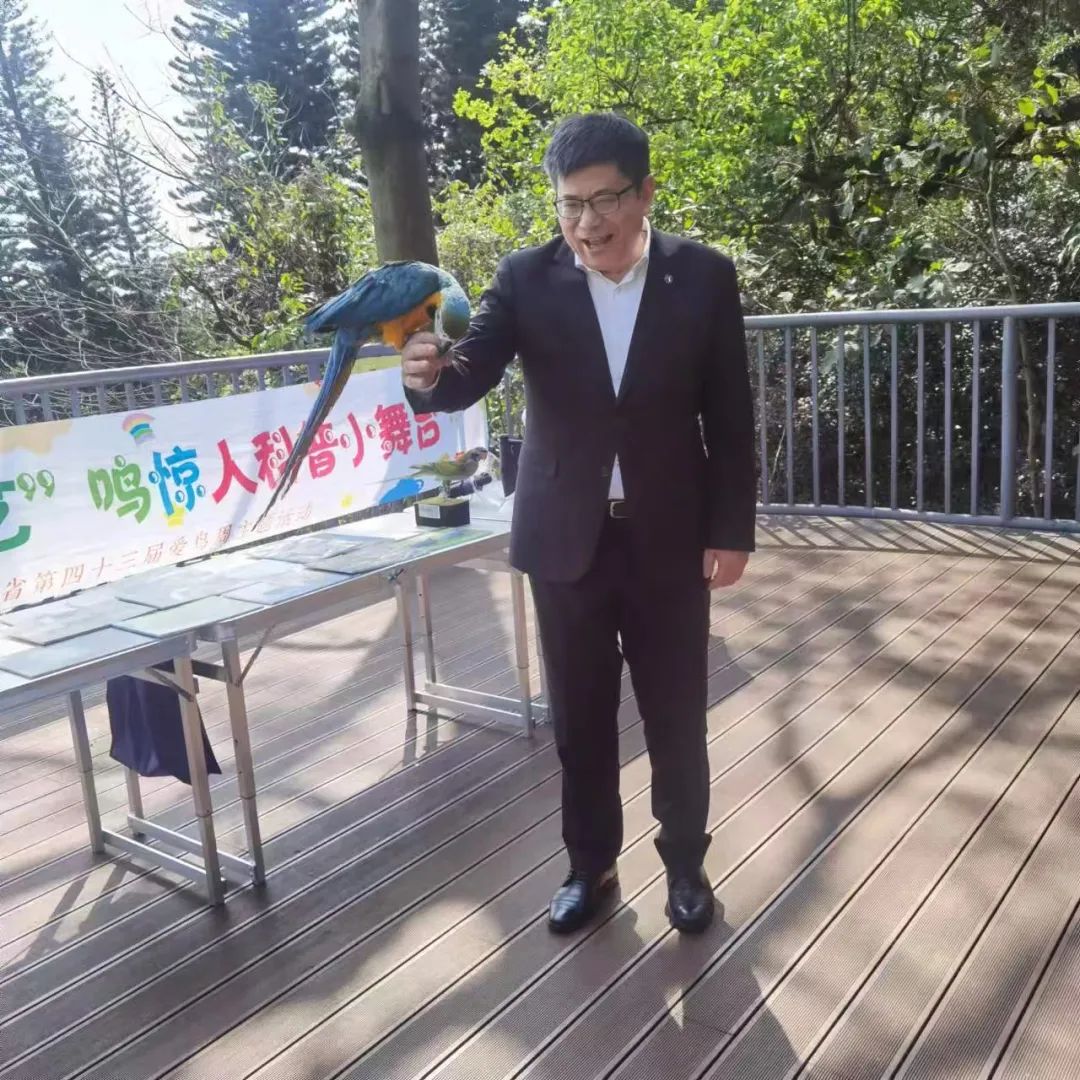
In the spring of 2024, we will investigate the Mingchun Valley Scenic Area in Baiyun Mountain, Guangzhou
The content of tourism has also changed. In the past, we went to tourist attractions to see the mountains, rivers and scenery, but now we see where young people go? To Wangfujing, Sanlitun and SKP in Beijing. What do they do? To get a manicure, go shopping, eat and drink coffee. People go to Shanghai to see the "shop opened by Miss Wang" in "Flowering", go to Chengdu to visit Chunxi Road, go to Zibo to eat barbecue... "The smell of fireworks in the world is the most soothing to the hearts of ordinary people." It can be seen that compared with the past, the biggest difference in the understanding of tourism now is that lifestyle has become one of the objects of tourism experience, and the good life in the city or the countryside has become an important tourism experience scene.
Science and technology culture brings us some new experiences that we have never thought of in the past. For example, when tourists go to Beijing, they will go to the Liangma River to experience the night tour project. In the past, how could anyone take this as an experience object for tourism? During the 2024 Spring Festival, tourists not only experienced intangible cultural heritage such as hairpins, but also went to Xiamen to watch the fireworks show, and some went to Guangzhou to watch the "Slender Waist" drone show. 2024 drones presented the shape of a giant dragon soaring and seeing the dragon in the sky. This feeling did not exist in the past. It is the development of science and technology that brings us these immersive experiences.
All beautiful things have become our pursuit. In my "Special Comments on the 2024 Spring Festival Tourism Market", I mentioned that "travel for art and pursue beauty", and art has become a tourist attraction. In the past, mountains, rivers, ancient history and humanities constituted tourist attractions for mass consumption or pursuit, but what I didn't expect was that now singing, dancing, opera and even games can also drive tourism. For example, the Spring Festival Gala dance "Dingbu Bridge" has brought popularity to Dingbu Bridge in Taishun, Zhejiang, "Wing Chun" has driven Lingnan culture, and the game "Black Myth: Wukong" has brought popularity to Shanxi culture and tourism. Various large-scale concerts, music festivals, stage plays, and even Suzhou Pingtan in the movie "Twelve Beauties of Jinling" and the Yue Opera "New Dragon Inn" starring Chen Lijun have become tourist attractions for young people to check in everywhere.
02Flourishing Scenery: The Still Waters of a Tourist Destination
In the past two years, the phenomenon of cultural tourism going viral has led many tourist destinations to pursue the "Internet celebrity effect" and be keen on creating hits. Regarding the question of whether a tourist destination can become popular, I think that as long as the following points are achieved, it is only a matter of time before it becomes popular. What is more important is to maintain long-term sustainable development.
First, we need to build and promote a good tourism image. We cannot always promote a long history, outstanding people, beautiful mountains and rivers, otherwise tourists will not be able to have an emotional connection with you. We must establish a recognizable tourism image, which should be warm, sincere and kind.
Second, there must be convenient transportation and related infrastructure, including "big transportation" such as airports, high-speed railways, stations, and docks, as well as "small transportation" such as subways, buses, online car-hailing, and shared bicycles. Otherwise, even if the tourism image is promoted, tourists will not be able to go or have inconvenience in traveling, which will greatly damage the enthusiasm of tourists.
Third, there must be market entities and a business environment, such as travel agencies, hotels, homestays, scenic spots, and restaurants. No matter how good a place is, if there are no food and accommodation facilities, and bank cards and mobile phones cannot be used, and only cash can be paid, it will not work.
Fourth, local governments should establish and improve a modern governance system oriented towards tourist satisfaction, maintain the market environment, and protect the rights of tourists.
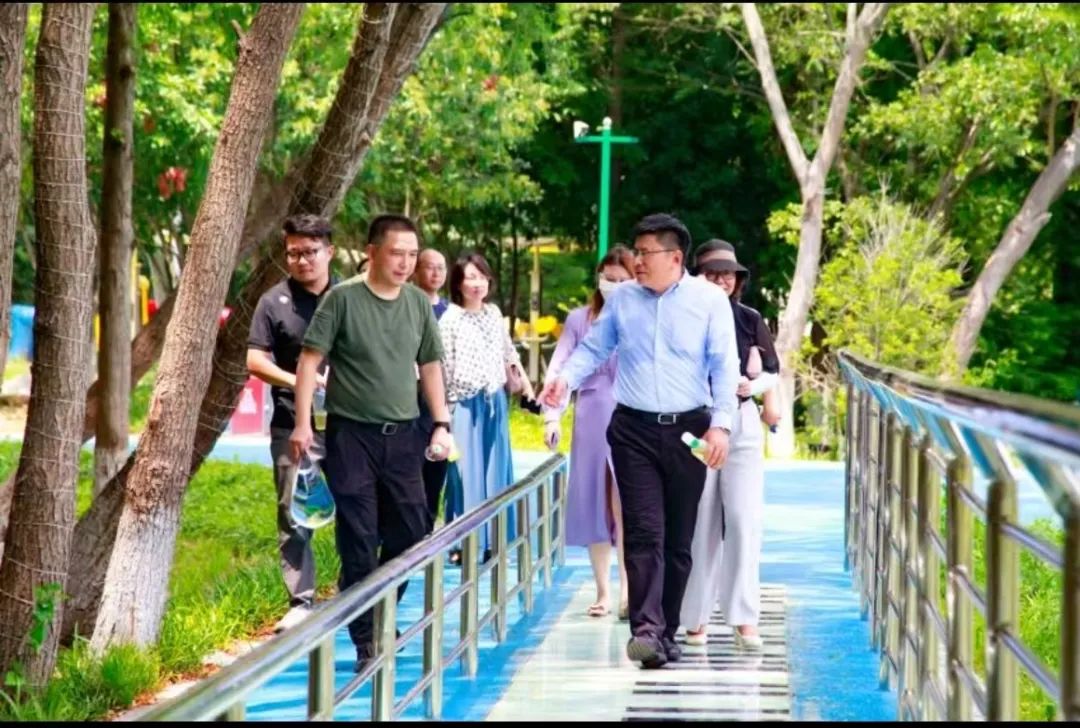
In 2018, we investigated the Jubaoshan Scenic Area in Nanjing
I once talked about Harbin's ice and snow tourism with the title "Harbin's Snow Tourism Industry Blossoms", in which I mentioned that two measures played a key role: first, before the snow season, the Harbin Municipal Government publicly issued a "Letter to Citizens" to guide citizens to treat tourists well; second, Harbin Ice and Snow World issued a "Letter to Tourists" in response to the long queues for ice slides and ticket refunds. Harbin's tourism promotion is very good, but it should also be noted that behind it is the concerted efforts of various units such as the Internet monitoring department and the market supervision department, which makes tourists really happy. Only when the basic logic and underlying architecture are done well, it will be more meaningful to use the Internet to divert traffic, otherwise tourists will not feel a sense of gain.
Some people are anxious about what to do next year if they become popular this year. I think no one can live with drums and gongs every day, and no city can live under the spotlight every day. We should accept the ups and downs, treat "Internet celebrities" as a wave on the water, and more importantly, pay attention to the deep current of still water. I hope that the "Internet celebrities" in the tourism industry are not fleeting fireworks, but flowers that flourish from generation to generation. People often say "how to create a hit", and I am very worried after hearing it. I hope everyone will have more wisdom and patience for the development of the tourism economy. For example, in Harbin, instead of building indoor ski resorts and ice rinks to extend the ice and snow economy to all four seasons, it is better to let tourists feel the snow in winter, the flowers in spring, the coolness in summer, and the fallen leaves in autumn, and feel the beauty of each season. Don't pursue the creation of hits excessively, but find the basic laws of tourism development, like a gardener, weeding, watering, sunbathing, and waiting for the flowers to bloom. Tourism needs "Internet celebrities", but Internet celebrities are not everything, and they cannot be regarded as the ultimate goal.
I have full confidence in Harbin. We have seen that Harbin has many choirs and many citizens are very musical. This city has the gene of music. I often say that if the locals live a happy and cultural life in a place, it will definitely be a beautiful living space that can be shared and a quality living destination. So Harbin should be confident. Spring, summer, autumn and winter each have their own advantages, and the urban area and the remote suburban counties also have their own advantages. Don't dwell on the problems after the heat has passed. Will you not live without heat? There is a saying on the Internet, "Some places have never won online and never lost offline." Many places may not have the lively scenes on the Internet, but they have also received many tourists. As long as there is satisfaction and love from tourists, I believe that the development of the local tourism economy is a natural thing.
In terms of industrial layout, we need to make spatial layout of tourism industry with cities as the center and cities as the support, because generally speaking, the focus of tourism industry is in cities. Years of data monitoring show that 10 large city clusters in my country, such as Beijing-Tianjin-Hebei, Jiangsu-Zhejiang-Shanghai, Guangdong-Hong Kong-Macao Greater Bay Area, the middle reaches of the Yangtze River, Chengdu-Chongqing, and Guanzhong, are both the main source of tourists and the main destinations, and tourists mainly flow between these city clusters. During holidays, more than half of the tourists in the country travel by car. These areas have convenient transportation and internal integration, gradually forming a 1-hour living circle, a 2-hour leisure circle, and a 3-hour tourism circle. From a national perspective, a large triangle (Beijing, Shanghai, Chengdu) and two small triangles (Guangzhou, Zhuhai, Shenzhen and Nanjing, Shanghai, Hangzhou) are formed. These are the most active areas in China's tourism economy.
I often talk about the image construction of tourist destinations. Streets, business districts, scenic spots, and resorts (which we call "three districts and one circle") can become tourist destinations, but provinces and municipal administrative districts can hardly become tourist destinations (except for Yanqing and other remote suburbs of Beijing, because their size is equivalent to a small city). For example, when we say we are going to Kunming or Jinan for tourism, we rarely say we are going to Shandong or Jinan's Lixia District for tourism. Provinces can be understood as not specific enough, so why do we say that municipal administrative districts will not become independent tourist destinations? Take Beijing as an example. Not to mention tourists, even locals may not know that after passing the Rainbow Gate, they will reach Dongcheng District, and after passing which street, they will reach Xicheng District. But when it comes to going to Wangfujing, Sanlitun, and SKP, many people know clearly.
From a regional perspective, tourism has become route-oriented. In the 1980s, we often talked about Beijing, Xi'an, Shanghai, Guizhou, Guangxi and Guangdong, meaning that tourists were mainly concentrated in these areas. Now, it is more scattered and route-oriented. For example, the Qinghai-Gansu Grand Loop and Qinghai Lake Loop in Qinghai and Gansu are self-driving loops; Yangtze River cruises used to only pass through the Three Gorges, but now they are starting to go downstream from the Three Gorges, and cruise ships from Chongqing and Wuhan are strung together on the river; National Highway 318 has become a classic tourist route, and the "Hulunbuir" tourist train and Xinjiang's "Snow Country Train" are also popular with tourists. Route-oriented tourism is often related to the improvement of transportation infrastructure such as railways and roads, and is also related to the construction of national cultural parks such as the Yangtze River, the Great Wall, and the Grand Canal.
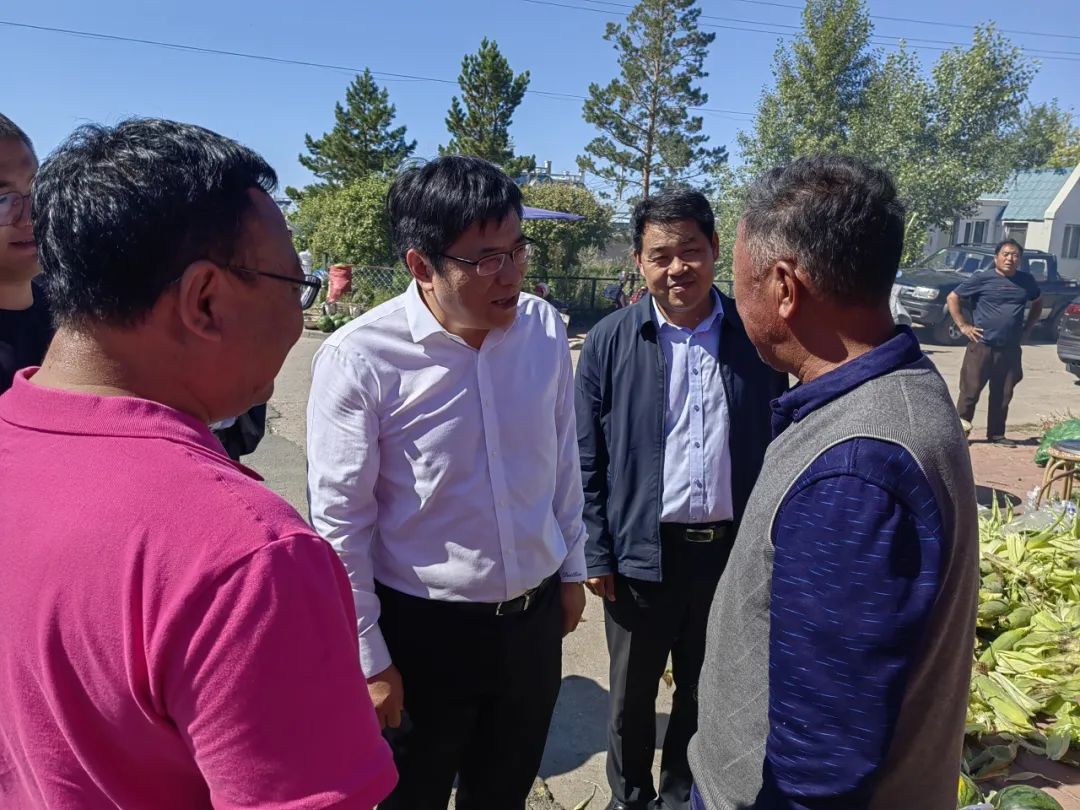
In 2019, we investigated rural tourism in Hailar, Hulunbuir City
At the same time, it is worth noting that with the increasing interest of young people in niche and cost-effective tourist destinations, county tourism has become a popular choice. In recent years, the national and local governments have introduced a series of policies to support the development of county tourism, such as the "Three-Year Action Plan for County Commerce (2023-2025)" and the launch of rural tourism boutique routes. At the same time, the continuous improvement of infrastructure such as county transportation and accommodation has improved the convenience and comfort of tourists' travel. By integrating cultural, agricultural, and intangible cultural heritage resources, county tourism has developed emerging formats such as camping, research, rural tourism, and night tourism to meet the diverse needs of tourists. For example, Anji has created a unique tourism experience by integrating agricultural, cultural, and tourism through the coffee industry. During the National Day in 2024, the average daily orders for county tourism increased by 40% year-on-year, and the growth rate of tourism orders in some small counties exceeded 4 times. This means that a new development stage of mass tourism with a sinking market and upgraded demand has arrived, and "few people and beautiful scenery" and "different characteristics" have become the charm of county tourism.
03 The original intention is as firm as a rock: the mission of tourism people in this era
I have worked at the China Tourism Academy for 16 years and have been engaged in tourism research for nearly 30 years. I often say that our generation is the lucky ones of the times. We have not designed anything ourselves, and our development to the present is a lot of accidents.
I took the college entrance exam in 1986. I didn't know much about the major, so I followed the teacher's advice and studied business management. When I was a graduate student, the teacher said that rural children should study something useful, so I studied economics.
Originally, Anhui University of Finance and Economics, where I studied, had a strong specialty in trade economics, but my teacher suggested that I study tourism. That was in the early 1990s, and no one knew what tourism was, so I asked, "What is tourism?" The teacher said, "Young people should create new fields. There are too many people on the narrow path of economics, and it is difficult for you to get out. If you study tourism economics well, you may be able to get out." So I chose this emerging discipline, and later I studied for my doctorate at the Chinese Academy of Social Sciences in the same major.
After graduation, I taught in school. When I taught, the first thing I did was to tell students what a hotel is and what hotel management is. At that time, many people did not know much about tourism, and even less about hotel management (called restaurant management at that time). My mother asked me, "You study business management. We know that you can become a factory director or manager after graduation. Whether you can be one or not is one thing, but at least we know what it is for. What is tourism for? Is it to take people out to play? What is a restaurant for? Is it to cook?" I used a figurative statement, saying that if we want to receive Western tourists, we cannot just give them steamed buns and steamed buns. We must treat them to Western food and have an atmosphere. According to the Ritz-Carlton Hotel, it is to serve gentlemen and ladies. I also took students to the best local hotels at that time to observe, so that they could feel the quality of modern life and apply it in practice.
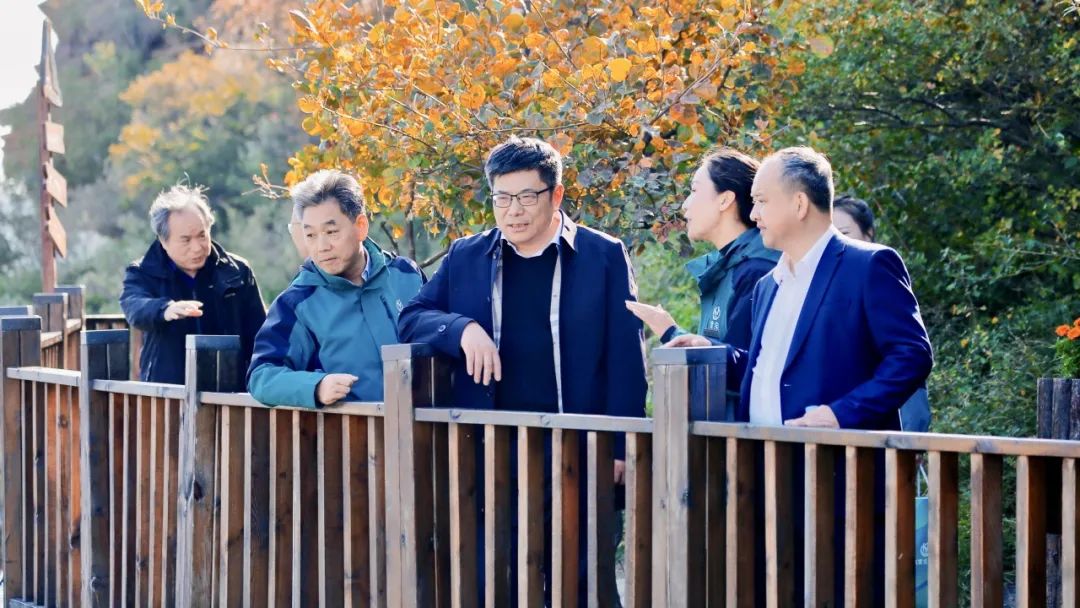
In 2024, investigate Baoquan Scenic Area in Xinxiang, Henan
Initially, the subjects of my research were luxury hotels such as Hilton and Sheraton, but this was far from the life of ordinary people at that time. There was an experience that had a great impact and baptism on my thinking. It was a holiday in 1999, and I went to Huangshan for the first time. At that time, there was no high-speed rail like now, and there were no first-class and second-class seats. Not long ago, there was a popular TV series called "South to North". At that time, we were in the era of green trains like in the show. There were too many passengers and it was too crowded. There was no way, many people got on the train by climbing in through the window. I saw many students wrapped in military coats on the top of Huangshan Mountain, staying up all night, waiting to watch the sunrise on the top of the mountain. That picture is very romantic when I think about it now, but it was not so romantic at that time. It was very cold and there was no place to live and we couldn't afford it. The road back was still very congested, so I wrote an essay on the way called "Thinking of the Post Station". I realized that when my parents went to the county town to do business and my brothers went out to work, they certainly couldn't stay in Hilton or Sheraton, but they couldn't always live in the basement, so I couldn't just study Hilton and Sheraton, but I had to study the needs of the Chinese people themselves and do research that was useful to the Chinese people. I wrote a paper called "Research on Modern Hotel Groups", studying how to take Western experience and transform our own guesthouses and hotels. Later, I published 11 articles on economy hotels in China Tourism News, specifically studying hotels like Home Inn and Hanting that are affordable for ordinary people.
As the tourism industry enters a new stage of mass tourism development, the country needs to reconstruct the tourism development theory, systematically answer why tourism should be developed, what to rely on to develop tourism, key tasks of tourism development, regional coordination, international and domestic coordinated development and other questions, and cannot always cross the river by feeling the stones. In addition, the tourism industry is a field with strong economic attributes and high marketization, which requires a large amount of data to structure the industry, and it also requires a lot of data support to describe and grasp the market or tourism economy. In the past, market entities such as travel agencies and hotels were rated and qualified, and later there were a large number of mergers and acquisitions and reorganizations, which also required guidance from authoritative institutions. So in 2008, with the approval of the Central Organization Department, the former National Tourism Administration established the China Tourism Research Institute. According to the above needs, the newly established China Tourism Research Institute has three missions: to be a government think tank, an industry think tank, and a theoretical highland, to provide support with a large amount of research, and to promote the practice of ideas with ideas from practice. I was transferred to the newly established China Tourism Research Institute as vice president, and later became the president.
 Visit Uganda in 2024
Visit Uganda in 2024
In the past few years, with the support of the National Social Science Fund, we have conducted research around public policies and have done some major projects and key projects, such as: systematically constructing basic theories such as tourism economy, tourism consumption theory, tourism macro-control theory, tourist satisfaction theory, tourism statistics and big data analysis, and also proposed some new concepts and theories, such as "host-guest sharing", "life above the landscape", "people-centered mass tourism", "modernization of the tourism industry guided by and supported by smart tourism", "sustainable green tourism", "civilized tourism to promote coordinated development of tourism", etc. We also participated in the drafting of important documents such as the Tourism Law, the "13th Five-Year Plan" and the "14th Five-Year Plan" tourism development plans. When participating in the formulation of the Tourism Law, I proposed the concept of "tourism rights" and did related work.
In 2009, the State Council issued Document No. 41, which proposed two strategic goals for the development of the tourism economy: to cultivate the tourism industry into a strategic pillar industry of the national economy and a modern service industry that the people are more satisfied with. We participated in the drafting of the document. So how to implement it in the future? What is a strategic pillar industry of the national economy, how to achieve it, and what to do if problems arise? To this end, we have established a tourism economic operation monitoring and early warning system, and this achievement won my country's first UNWTO Government Innovation Award. What is a modern service industry that the people are more satisfied with? In response to this content, we have established a set of indicator evaluation system, selected 60 cities across the country, and conducted online and offline surveys on tourist satisfaction, as well as indexes such as the three major domestic tourism markets. The survey report is released to the public every quarter. Since then, the tourism industry has had its own "thermometer" and "weather forecast" for the first time. Now, we also monitor the tourism popularity of 343 cities across the country every month in the next month, telling each city how "hot" the tourism industry may be and what measures to take in advance. Among them, the achievement of "tourist satisfaction evaluation" has won the Innovation Award and Science and Technology Progress Award issued by the UNWTO. We have established a monitoring system for tourism economic indicators, such as the number of tourists, income, consumption structure, length of stay, travel distance, urban and rural origins of tourists, etc., which can announce the level of tourism economic development to the public at any time and point out any existing deficiencies, etc.
In addition, with the support of the Ministry of Science and Technology, we have undertaken a major national science and technology project to promote the innovative development of the tourism industry with artificial intelligence. Through these efforts, we have given the tourism economy a theoretical basis, rather than just a simple business.
In fact, there is no such institution in other countries except the Korea Culture and Tourism Institute, so we have to rely on ourselves to explore. In addition to the tasks assigned to us by the superiors, when carrying out specific work, I consider what the Party and the country need us to do, and what the people need us to do. We are standing on Chinese soil, receiving fiscal funds, and are a research institution of the national government. We are not just for writing articles and publishing them internationally, or being satisfied with being a doctor or professor. All our efforts are to serve the country.
I work at the China Tourism Academy. Holidays are the busiest time for me. Tourism data is like hydrological data. Once you miss it, you can’t get it anymore, so we have to monitor the data every day. Sometimes I will suddenly come up with a number, and people will ask me why I have this research result. This is because I think, "A country can be without use for ten years, but it cannot be without preparation for a day", which is also the belief that has supported me for so many years. The results of our research may not be used by the country for the time being, but with the development of society, the people's demand for tourism and the country's promotion of high-quality development of the tourism industry, there will always be a time when these results will be used. It will be too late to study them then.
Until now, I still post a lot of my own handwritten documents on WeChat Moments. Now everyone can use mobile phones and computers, why do we still need to write by hand? This is because I think everyone is lazy. If you use a computer, you may just copy and paste. Handwriting can force yourself to think, so I will insist on handwriting, and I will also insist on using blackboards and whiteboards in my office and conference room. In my office, the computer is always on, and the electronic screen can be written on with a pen at any time. I often write plans directly on it, listing the schedule for a period of time.
I have been able to work in my favorite position for so long because of the trust of the organization and the needs of the industry. Through these years of practice, my thinking has gradually improved, especially after the integration of culture and tourism in 2018, I have become more able to think about problems at the national level. Later, the CPPCC family provided me with an important platform for fulfilling my duties.
In 2023, I walked onto the member channel in my first year as a member of the National Committee of the Chinese People's Political Consultative Conference. I reiterated on the member channel that tourism, as a strategic pillar industry of the national economy, is not only an important engine of economic growth, but also an important force for improving people's quality of life and promoting social progress. I remember that when I walked to Tiananmen Square after the meeting, five PLA soldiers happened to walk by, and I took a group of silhouettes. I recalled the inscription written by Chairman Mao on the Monument to the People's Heroes, and I couldn't help but burst into tears. I suddenly felt that I was standing in front of the Great Hall of the People with the national emblem on my head, my feet on the land of Tiananmen Square, and looking up at the monument. The sense of historical grandeur made me feel particularly small. But because I am in a great cause and become a part of it, I feel particularly important. The Chinese people pay attention to managing the world and benefiting the people. I feel that if I don't do something on such a piece of land, my life will be in vain. The country puts me in such an important position, not to let me enjoy the glory of the spotlight, but to let me carry the burden. Not long ago, a leading comrade entrusted me with the task: "After all, you are the backbone of our industry and have a certain influence. You must share the country's worries!" I felt a heavy burden on my shoulders when I heard that.
I once submitted a proposal to release the development potential of inbound tourism through visa facilitation. Objectively speaking, this is not easy. This proposal received a very serious response, and the relevant departments also asked for our satisfaction. This made me feel that as a CPPCC member, it felt very different to speak for the industry and fulfill my duties.
Looking back on the 40-year development of China's tourism industry, we have not only witnessed the rise of an industry, but also seen the changes of an era. From the initial golden age of inbound tourism, to the full popularization of mass tourism, to the deep integration of cultural tourism today, the development of China's tourism industry is like a magnificent epic, recording the great achievements of reform and opening up, and reflecting the people's unremitting pursuit of a better life.
Looking to the future, China's tourism industry is standing at a new historical starting point. With the rapid development of science and technology, the in-depth exploration of culture and people's higher pursuit of quality of life, tourism will no longer be just sightseeing and leisure, but will become a new lifestyle and cultural experience. We have reason to believe that under the guidance of national policies and with the dual empowerment of science and technology and culture, China's tourism industry will continue to write a glorious chapter and become an important force in promoting high-quality economic development, promoting cultural exchanges and integration, and enhancing people's happiness.
In this great era, every tourist has a mission and responsibility. We should contribute to the sustainable development of the tourism industry with a broader vision, more innovative thinking and more pragmatic actions.
This article is selected from the first issue of Zongheng in 2025, narrated by Dai Bin and compiled by Yu Yang. The text has been deleted. The picture is provided by the narrator
Author | Dai Bin Source | Zongheng Magazine Editor | Liu Xin Please indicate the author and source when reprinting